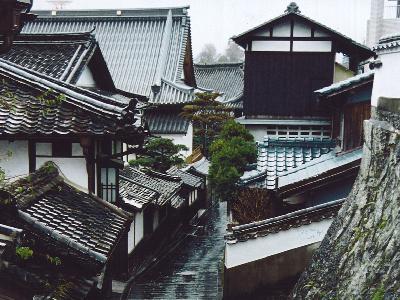|
Momo (Peach) Rock is located in the southern part of longish Rebun Island in the northern part of Hokkaido. The place where the rock is located was on ancient battle field referred to in an Ainu legend.
The rounded huge rock with sharply wringed top really looks like a peach. The green grass that is covering the rock surface looks velvety as if they were real peach skin. The soft feel of peach skin will come to your mind. It stands magnificently against the blue sky.
The area around this huge rock is covered with colonies of alpine plants peculiar to this island such as Rebun-kozakura (Primula modesta var. matsumurae)and Rebun-kinbaiso (Trollius ledebourii var. polysepalus). You can enjoy viewing these cute flowers from the observatory as well as from the promenade. It will be really refreshing to command this exquisite view in the wind from the Sea of Japan.
The rounded huge rock with sharply wringed top really looks like a peach. The green grass that is covering the rock surface looks velvety as if they were real peach skin. The soft feel of peach skin will come to your mind. It stands magnificently against the blue sky.
The area around this huge rock is covered with colonies of alpine plants peculiar to this island such as Rebun-kozakura (Primula modesta var. matsumurae)and Rebun-kinbaiso (Trollius ledebourii var. polysepalus). You can enjoy viewing these cute flowers from the observatory as well as from the promenade. It will be really refreshing to command this exquisite view in the wind from the Sea of Japan.
| [+ADDRESS] | 
|






















